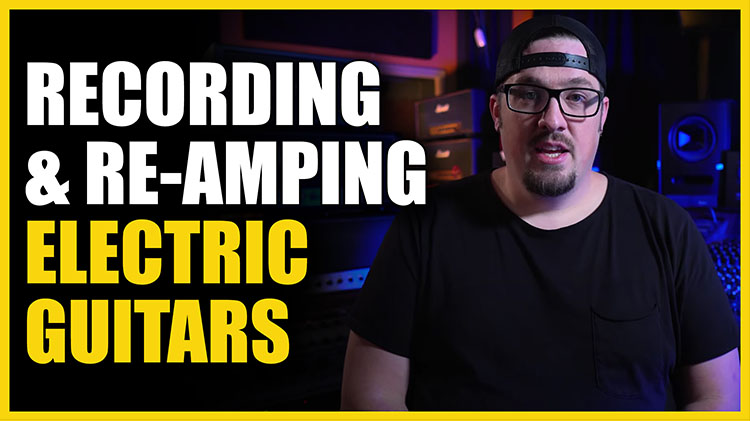Today, we have the wonderful Matt McQueen with us, and he is going to share with your how he records, edits, and re-amps electric guitars!
This is something that I have been doing for a couple of years now and that I learned from my friend and mentor and studio partner, Matt Goldman. The reason that I wanted to do this video is that when I did my first video, Top 10 Tips to be a Successful Recording Studio Owner, I talked about owning a DI box and a re-amp box and that was sort of one tip because of the way that I use it to record, edit, and re-amp guitars.
So what we’re going to do today is we are going to go through that process and I am going to show you how I set it up, how I connect it all together and how I use it inside of Pro Tools. What I do is once I am in Pro Tools, I actually send the DI channel out of its own separate output on the interface, and that output then comes out line level and hits a re-amping box. This then converts the line level signal into an instrument level signal that the guitar amplifier sees and reacts to the same way it would if a guitar was plugged straight into it.
There are a few benefits to recording guitars this way. The first one is that on your DAW screen you can clearly see the transient information of what the guitar is playing, which is really difficult when you have a guitar part that is either overdriven or heavily distorted. That information is basically flatlined and it is difficult to edit those kinds of guitars.
The second benefit is that once your edits are done, you can simply unarm the DI track and re-record the guitar with your edits in place, so by the time you get to the end of the song, all of your editing is done for all of your guitar tracks.
A third benefit is your guitar performance is now really tight and with your edits in place, you can go ahead and re-record the guitar, through the amplifier that you were using while the guitarist was making the performance and by the time you get finished tracking the song, all of the editing for all of the guitars is done. That’s really cool because you don’t have to think, did I go back and do that? Do I still need to do that?
- RELATED: How to Record Electric Guitar
The fourth benefit of recording guitars this way is that once your edits are done, you could also stick a pedal in the chain, between the re-amping box and the guitar amplifier. This workflow really helps you to make sure that as you are going, every step of the way through the song, you’re not thinking about fixing something later and it helps you to pay attention better to the details of what is being played by the artist.
So we’re going to jump into Pro Tools, and I’ve got a four-bar chorus riff, and along with the drums and the bass line, and main guitar riff, and I am going to double it with my guitar, to show you how I would go through and edit this and re-amp it if the guitar player were actually here in the studio! This is a really handy way to work really fast and make sure all your editing is done, and all of the guitars are played really tight together.
Watch the video below to learn more about Matt McQueen’s guitar recording process!
